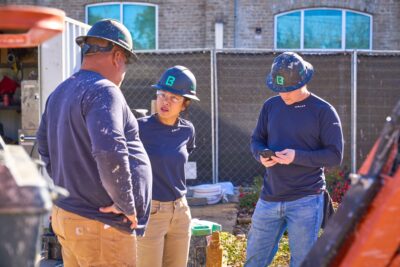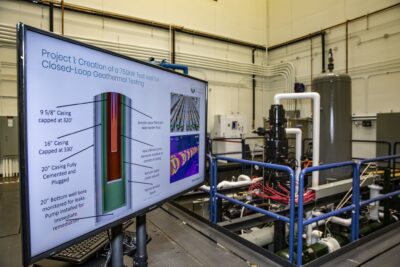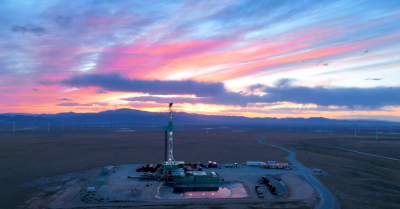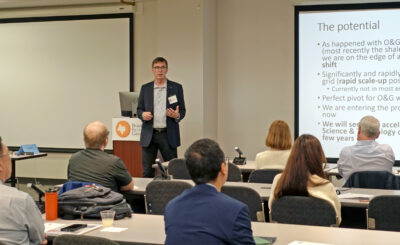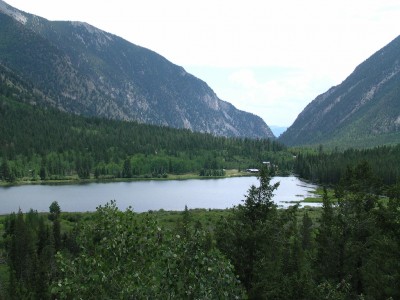Potter Drilling receives well deserved attention by The Guardian
Potter Drilling receives some good attention by article in The Guardian in the UK, describing the companies efforts for a new drilling technology that could have a huge impact on geothermal drilling.
In a recent article by The Guardian in the UK, Potter Drilling receives some well-deserved attention.
“A novel drill that is inspired by a jet engine and uses super-heated water to carve through rock could help make clean energy from underground rocks more economically viable, according to its backers at Google.
Potter Drilling is part-funded by Google.org – the internet search giant’s philanthropic arm – and wants to use its technology to develop geothermal energy, which involves tapping the energy from hot rocks deep in the Earth.
Geothermal energy is seen by environmentalists as a vast potential source of clean, carbon-free energy if it can be tapped efficiently. Traditional methods drill into the Earth and use naturally occurring underground pockets of steam or hot water in order to make clean electricity.
A report (pdf) by the Massachusetts Institute of Technology estimated that tapping just 2% of the potential resource from so-called enhanced geothermal systems between 3km and 10km below the surface of continental USA could supply more than 2,500 times the country’s total annual energy use.
Geothermal projects in countries from Australia to Iceland and Germany already generate thousands of megawatts of electricity. Geothermal power plants can be used as baseload electricity because they are usually productive for more than 90% of the time, compared with 65%-75% for fossil-fuel power plants. They also produce virtually no greenhouse gas emissions.
Enhanced geothermal systems (EGS) allow the traditional techniques to be applied almost anywhere. By drilling deep into the Earth (where rock temperatures can reach more than 200C) and pumping water into the hole, the underground hot rocks fracture, thus allowing the water to circulate and heat up. The hot water comes back to the surface and is then used to drive turbines and produce electricity.
“EGS could be the killer app of the energy world,” said Dan Reicher, director of climate and energy initiatives for Google.org, when its funding was first announced for Potter Drilling. “One of the attractive aspects is that it’s baseload, it’s 24-hour power and that’s a nice complement to solar and wind, which are intermittent sources. If you can put all three of these technologies together, we’re going to have a much more attractive green electricity mix.”
Potter’s technology aims to make EGS more economical because it can make drilling the holes more simple and cheaper. It will test its radical water-based design in the field for the first time in August.
The technology uses heat instead of mechanical abrasion to break rock apart. It works because certain types of hard rock, such as quartz and feldspar, do not expand uniformly when they get hot. This creates stress between the grains of the mineral sand that causes them to break apart. “The key is to heat it very quickly,” said Jared Potter, chief executive of Potter Drilling.
In the past 18 months, the company has drilled holes of 1 and 4 inches in diameter through hard rocks, to prove that their idea works. In August this year, the company will for the first time drill a 4-inch hole to 1,000 feet deep. “A realistic target for this type of intermediate development would be 5km,” said Potter. “Eventually our goal is to be able to drill to 10km.”
So-called “spallation” drilling has been used before but with air, rather than superheated water, fired out at supersonic speeds into a hole. The original designs for spallation drills in the 1950s effectively used jet engines to fire hot air at rocks. But they were restricted to use very close to the surface, in applications such as rock quarrying.
Jared’s father, Bob Potter, came up with the water-drill design after working on geothermal technologies for the Los Alamos National Laboratory, the government installation where the nuclear bomb was invented and tested in the 1940s.
The Potter drill initially requires fossil fuels to heat the water, but the company claims the process is still far more environmentally friendly than using a regular drill. “What you need is very concentrated energy and it’s hard to do that without using combustion,” said Potter. “It’s a trade-off, it might create a little CO2 in the drilling process but it’s going to be less than what they do in the conventional process with conventional drill rigs.”
In a traditional drilling rig, most of the fuel’s energy never reaches the underground drill-bit because as it is wasted in friction and other inefficiencies in the system. The drill bits also wear out frequently and, in certain types of rock, it may only be possible to drill for 100 feet before you need a new bit. “Every time you take the bit in and out, if it’s a deep hole, you may lose a day of time – that has to be factored into the cost as well,” said Potter. “Our technology doesn’t have a bit, can drill continuously and we can drill 3-5 faster than they can. We can drill 30ft an hour and they’re drilling 5-10ft an hour. And we’re not taking the bit in and out of the hole. Our energy is right at the rock face.”
That trial will be funded by the US Department of Energy but the company has also received money from Google.org, as part of the web search gaint’s larger $10m (£5.4m) investment into renewable energy sources that could replace coal in the future.”
Source: The Guardian







